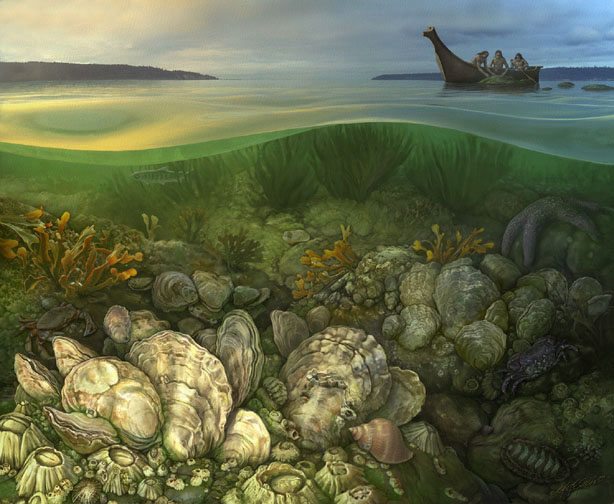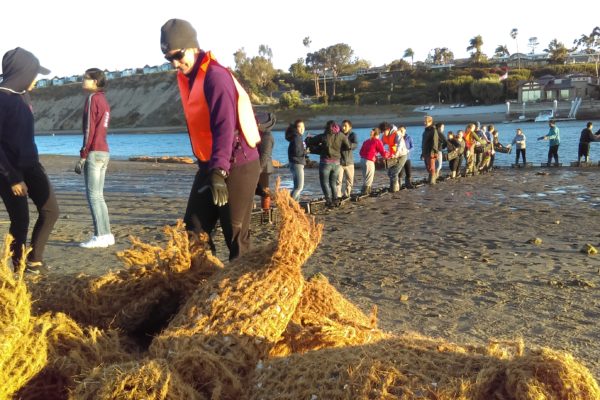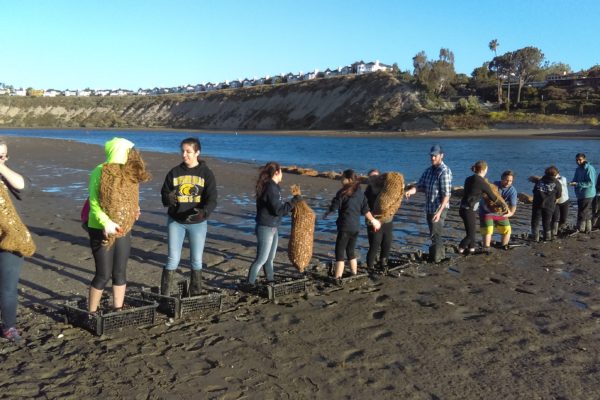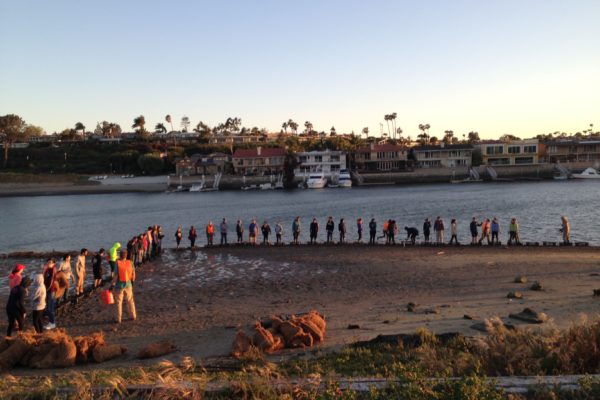Eelgrass meadows provide similar ecosystem services by creating habitat, nursery, and foraging grounds for many invertebrate, fish, and bird species; cycling nutrients; sequestering carbon; stabilizing sediment; and improving water quality.
Simultaneous restoration of the Olympia oyster and eelgrass has never been attempted in southern California, but smaller restoration efforts of both species individually in Newport Bay have been successful.
Coastkeeper has partnered with Dr. Zacherl from CSU Fullerton, Dr. Christine Whitcraft from CSU Long Beach, environmental engineers at Anchor QEA, Inc. as well as students from San Diego State University and the University of Southern California to initiate this innovative and multi-benefit project. Due to the benefits oysters and eelgrass may provide for each other, integrated restoration of the two species is the logical next step to recover greater ecosystem connectivity and function in Newport Bay.
By providing the habitat that native oysters need, we will facilitate the return of this endangered species and the many ecosystem benefits they provide. In addition, by involving the community in the restoration process we will increase community engagement and stewardship in Newport Bay. Lessons learned from our project can also be used to better inform future living shorelines projects.












